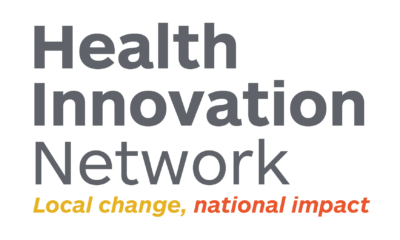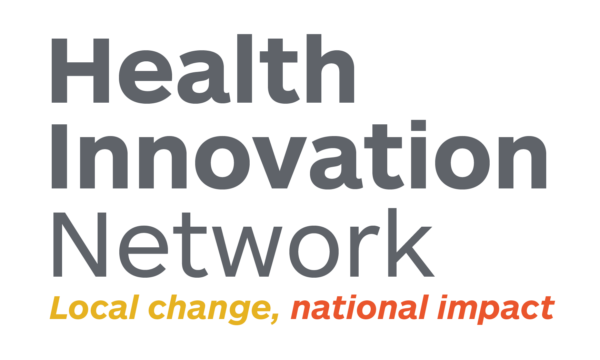The challenges the NHS and social care sector are facing, laid bare by the Darzi report, have led to widespread acceptance that change is needed across the NHS to better care for patients, support the NHS workforce and drive economic growth. The new Secretary of State for Health and Social Care stated it is now the policy of the Department of Health and Social Care that the NHS is broken and the Darzi report concluded that the health service was “in a critical condition”.
The Health Innovation Network welcomes the government’s focus on the need to do things differently; to increase the uptake of digital, use of community services and the need for prevention. As the report emphasised, the role of and need for innovation is central to our ability as a health system to deliver these changes, “in the medium term, it is innovation that can make the NHS more sustainable”.
There are no shortage of new ideas and innovations that can help tackle these huge challenges and support the government’s desired shifts. For over a decade the Health Innovation Network has supported thousands of innovations such as digital technologies, AI and machine learning, partnership working, new medicines and transformed pathways. Given the appropriate resourcing, focus and incentivisation, there are numerous new ideas delivering great results at a local level, that could be scaled to deliver national impact in the government’s priority areas.
Analogue to digital
AI and digital innovations can increase capacity and efficiency by improving diagnostics and supporting people to better manage their conditions. Equally, there are huge productivity gains to be made through using more digital technologies to reduce inappropriate referrals and prevent patient deterioration while waiting for treatment.
For example, BraveAI risk assessment tool uses Artificial Intelligence (AI) to improve access to primary care is the. BraveAI finds patterns in data to help healthcare professionals identify ‘at risk’ patients and then reach out to them through neighbourhood teams.
A pilot in Somerset has shown an average 60% reduction in attendance at A&E, a 35% reduction in the number of falls and an 8.7% reduction in the number of ambulance call-outs. This year, the device is being rolled out to more than 30 areas in the South West, including practices in Somerset, and patients will be informed about what it can do when they visit their practices.
Rolled out nationally, BraveAI could have an enormous impact on patient outcomes and access across the country.
Two further examples of where AI advances are already having an effect on waiting times are Behold’s Red Dot and Brainomix’s 360 Stroke Platform, which use AI image analysis to speed up diagnostics, significantly reducing waiting lists for people awaiting lung cancer and stroke treatments.
Red Dot’s algorithm produces a result in just 15 seconds, and can reduce the overall diagnostic time from seven days to three days per patient. Brainomix has demonstrated a 50% increase in thrombectomy rates with a one hour time saving to treatment – which is crucial to the treatment of strokes.
Hospital to Community
Millions of hospital services can be delivered elsewhere, and innovation can transform high-volume care pathways (such as long term conditions, frailty and cancer) at scale through enabling diagnostics, monitoring, self-management and treatment in other care settings or at home.
Refining and optimising care at home also supports the Net Zero agenda through reduced travel to appointments. Most importantly, it can help bring peace and comfort to patients if they can receive treatment or diagnoses in a place that is comfortable for them and avoids the need to travel.
Virtual Wards are a great example of where innovation can benefit patients and clinicians remotely. Dr-Julian is a service that provides virtual appointments delivered by proprietary video, voice and text technology platforms that could offer a cost-benefit ratio of £1: £2.7 if scaled across the NHS through the expansion of its virtual wards. Another provider, CliniTouch Vie can help the NHS save an estimated £100m in anti-depressant prescribing, costing £60 per patient rather than £750 per patient for Cognitive Behavioural Therapy. While Luscii remote patient monitoring was found to have the potential to reduce re-admissions by up to 25% in one North West London pilot, and EkoDuo, a digital stethoscope with the ability to run the same assessment as a 12-lead ECG, was able to divert 90% of patients into the community pathway instead of hospital, and had the potential to save the equivalent of 246 life years.
Treatment to prevention
Cardiovascular disease is the biggest cause of preventable deaths in the UK and the world. It is also the leading cause of people leaving the labour market and one of the worst contributors to healthcare inequality. It is seen as the ‘big ticket’ item for any innovation or strategy.
Our CVD pipeline scan identified 174 high-promise innovations, from which we have identified 18 that are ready for scale and spread. One example is CVDACTION, a smart-data tool developed by UCLPartners (the north east London and mid and south Essex Health Innovation Network), that supports GPs in preventing heart attacks and strokes at scale. It uses data integrated from around 85 searches and is currently being trialled across a population of 800,000 people in London and Yorkshire.
Driving economic growth
Growing the economy underpins much of the new government’s work across all departments and the Health Secretary has made clear his belief that the health service could and should be a driver of economic progress. Health innovation in its nature drives economic growth. Since 2018, our support to innovators has contributed £2.6bn to the economy, and safeguarded or created over 10,000 jobs.
One such example is getUBetter, a digital self-management support platform for all common musculoskeletal (MSK) conditions and women’s pelvic health, which demonstrated a potential cost saving of up to £1.96 million per year per integrated care system for use for treatment of back pain alone in an independent economic evaluation. For every £1 spent, getUBetter saves £4.20. Another is Kooth, a digital mental health intervention, which saves £3 for every £1 spent on the technology from reductions in healthcare utilisation.
Getting people back to work
Innovation also has the potential to directly tackle economic inactivity, if we focus on the conditions most affecting the working age population. The Health Foundation research found cardiovascular and musculoskeletal conditions remain the most common work-limiting health conditions, whilst Cancer and mental health carry 14% and 16% respective risks of causing people to leave the workforce. The Government report ‘Menopause and the Workplace’, published in 2022 Menopausal women with at least one symptom at the age of 50, were 43% more likely to have left their jobs by 55 and 23% more likely to have reduced their hours: pre-pandemic, women over the age of 50 were the fastest growing group of the workforce.
Innovations focussed on these clinical areas could have a dramatic affect on improving the health of our workforce and tackling economic activity. This approach also offers the opportunity to tackle healthcare inequalities and could also reduce social deprivation.
For example, digital mental health interventions Sleepio and SleepStation have not only already been show to help alleviate waiting list pressures for insomnia, reduce in the amounts of medicine prescribed (56-62%) and a 68-70% fall in anxiety symptoms, but they have also demonstrated a 21% reduction in work absence.
If scaled up nationally, these two innovations alone could benefit patients and the economy across England and Wales.
Patient Safety
Patient safety is about improving lives through reducing avoidable harm to patients. Reducing harm reduces demand on services, which ultimately supports recovery of the health service. Using innovation to improve patient safety, which improves patients’ lives, will also drive economic growth.
One example is the PReCePT programme, work carried out in maternity and neo-natal units, which has saved 1,198 babies’ lives and prevented 463 cases of cerebral palsy to date. As well as saving lives, there has been a saving the health and social care system of £463m in avoided costs.
All of these examples that are currently improving the NHS, benefitting patients and driving economic growth have the potential to do more if implemented more widely.
With the new government’s priorities for health in the Prime Minister’s speech, the 10-year plan set to be launched in the coming weeks and Lord Darzi’s analysis of the NHS, there are many new opportunities to bring health innovation and implementation to the forefront of policy-making and to demonstrate how each of the new government’s health priorities can be addressed through thinking and working differently.
We look forward to engaging with our many partners on the NHS 10 Year Plan and doing our bit to ensure health innovation and implementation remain at the forefront of policy-making. As the health innovation adoption experts, we have a responsibility to demonstrate how each of the new government’s health priorities can be addressed through thinking and working differently.

Angie Doshani, is founder of JanamApp and Consultant Obstetrician and Gynaecologist at University Hospitals of Leicester NHS Trust. JanamApp is a ground-breaking solution addressing the disparities in pregnancy outcomes faced by South Asian women, who experience a 1.8 times higher risk compared to their white counterparts. The challenges of some women from this demographic include [...]

Lesley Bull, a South London GP and our 1000th delegate chats to Lois-Hooper Ainsworth, Programme Coordinator on the National Polypharmacy Programme, about why she registered for the Health Innovation Network Polypharmacy Action Learning Set, what she got out of it and why other GPs should attend. Lesley Bull So, Lesley, could you tell [...]

Jo Barosa is Account Director at Qbtech UK. Qbtech is a market leading provider of innovative objective tests for assessing and treating ADHD, changing the landscape of ADHD care. Driven by its mission to improve the lives of people with ADHD, Qbtech supports by providing digital and clinical solutions to improve clinical decision making, service [...]








